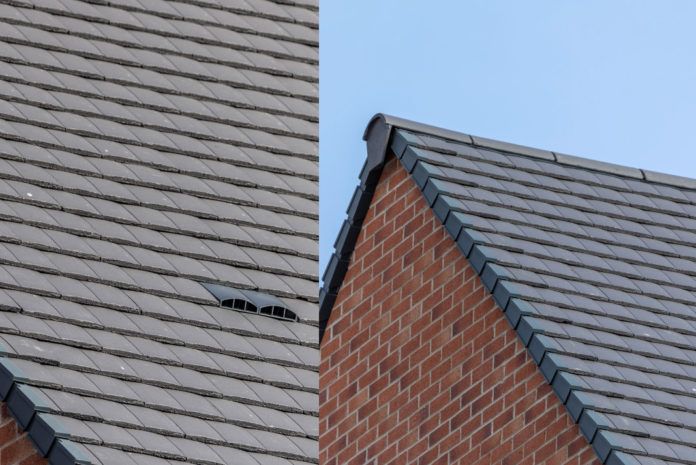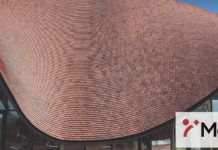This month, Tom Woodhouse, site services manager at Marley, answers contractor questions about dry verge installation.
Dry verges are the part of the roof system that has come under the greatest scrutiny over recent years. The verge is probably the most vulnerable part of the roof, due to its exposure to wind and water penetration and the ban on mortar bedding, without additional mechanical fixing, led to a huge increase in the amount of dry verge systems on the market.
However, incidences of gable end staining and eaves closure units coming loose led to concerns about inferior products being sold, so dry verges were a key focus for the new Dry Fix Standard, BS 8612, which was introduced last year.
BS 8612 brought in minimum performance requirements and some strict test measures to prevent problems such as gable end wall staining, as well as new fixing requirements for dry verge systems.
Despite the introduction of BS 8612, there is still some concern in the industry about the issue of gable end wall staining, and also how to fix the systems to the more stringent British Standards. Here, I’m going to answer some of the most frequent dry verge queries from contractors.
Q: How do I know if the dry verge system I am buying is BS 8612 compliant?
If you are buying a dry verge system from a trusted manufacturer, it is likely to be compliant with BS 8612. You can check this either on the packaging, or on the accompanying instructions. All of Marley’s dry verge systems have been tested to meet, or exceed, the requirements of BS 8612.
Q: How can I prevent gable end staining?
As well as choosing a BS 8612 compliant product, look for a dry verge system that has an integral design feature to assist with drainage performance. For example, both our Ashmore and Universal Dry Verges have been designed and tested to protect against gable end staining, with multiple drainage channels to direct water away from the wall.
Q: Can I install a dry verge system with the gutter already in place?
There is a general misconception with some dry verge systems that they will be installed before the gutter. In fact, building practices have changed and our own investigations show that these days the majority of dry verges end up being fixed with the gutter already in place, which isn’t always in line with some manufacturer instructions.
For this reason, unlike others on the market, our Universal and Ashmore Dry Verge systems incorporate a quick starter verge fixing method that can be installed easily, regardless of any obstructions such as gutters. We designed the systems in conjunction with roofers to provide an easy-to-install, robust method of securing the first verge unit. The fixing method, which incorporates a pivoting bracket, also provides visible evidence of a correct fix.
However, if the system you are using doesn’t have this, you need to follow your manufacturer instructions, or you could invalidate any warranty. If it isn’t possible to do this, don’t be tempted to improvise by using things like brick ties, to achieve a suitable-fix into the fascia or roof substructure. Instead, consult with the manufacturer.
Q: What is the best way to get mechanical engagement with the batten?
A dry verge system that includes a batten end clip makes the mechanical engagement required under BS 8612 much simpler. Both our Universal and Ashmore Dry Verge systems include a batten end clip, with sharp teeth to grip into the batten, making it extremely secure, as well as being very quick to push or hammer into place. Unlike others on the market, it can be fitted after the roof has been tiled.
Q: Do I need to have a bargeboard?
Having a continuous bargeboard can add further protection, by making sure that the verge is positioned out from the brickwork. However, as part of BS 8612 requirements, our dry verge products are tested without a bargeboard present – so contractors can have peace of mind they will drain water effectively with or without a bargeboard.
Q: How do I know if a product is compliant with the tiles I am using?
Many dry verge products are sold as universal, but they have different levels of compatibility, so it is important to check this – either in the instructions, or on the manufacturer website. Using incompatible products can lead to problems with fixing and also invalidate warranties.
Our Universal Dry Verge is compatible with all three main interlocking tile types; large standard, medium format (15” by 9”) and large format thin leading edge. The Ashmore Dry Verge has been designed to complement the Ashmore double interlocking plain tile, but it is also fully compatible with other interlocking plain tiles on the market. We also sell complementary dry verges for our Edgemere interlocking slate range.




